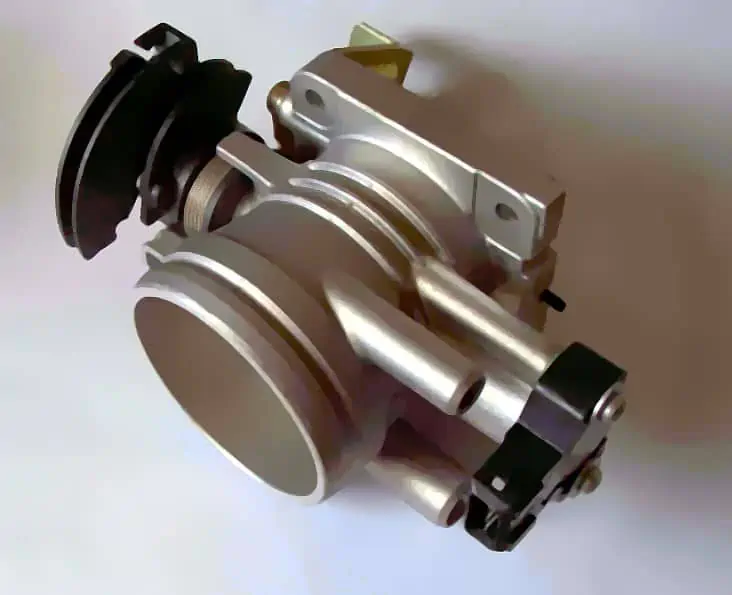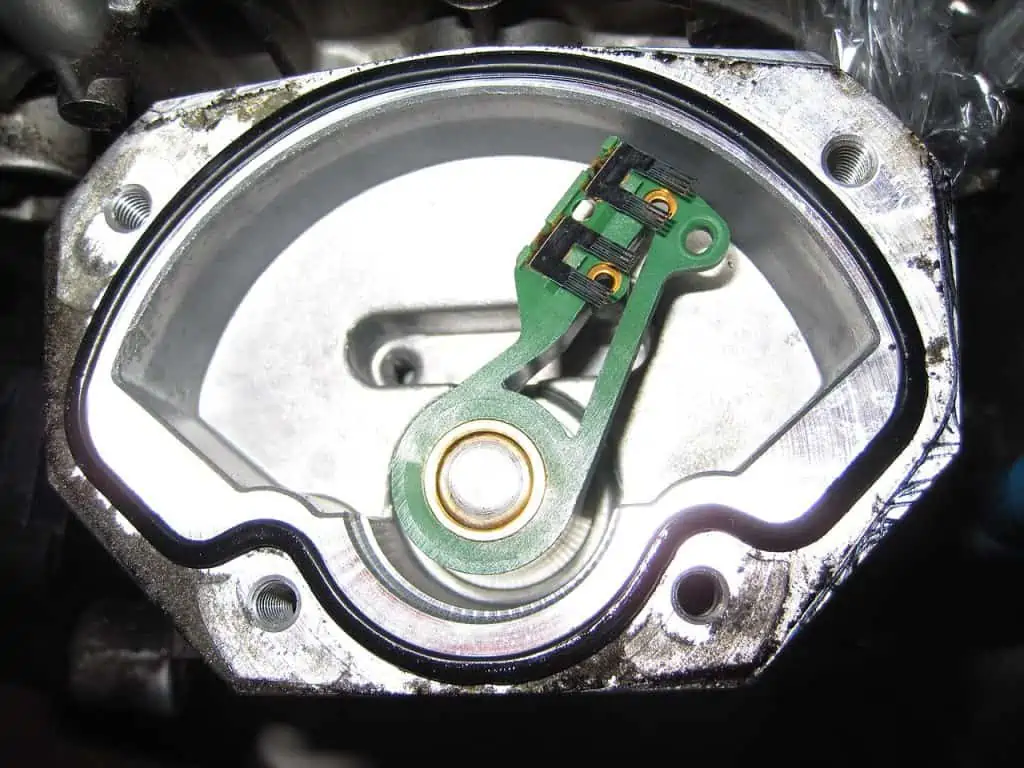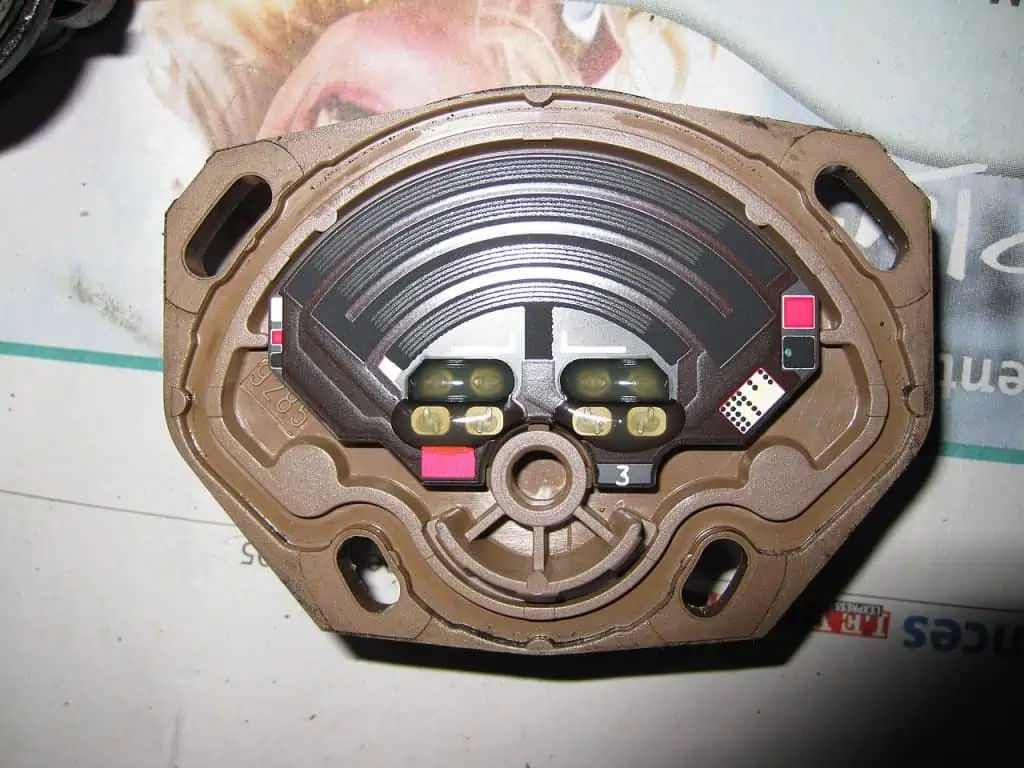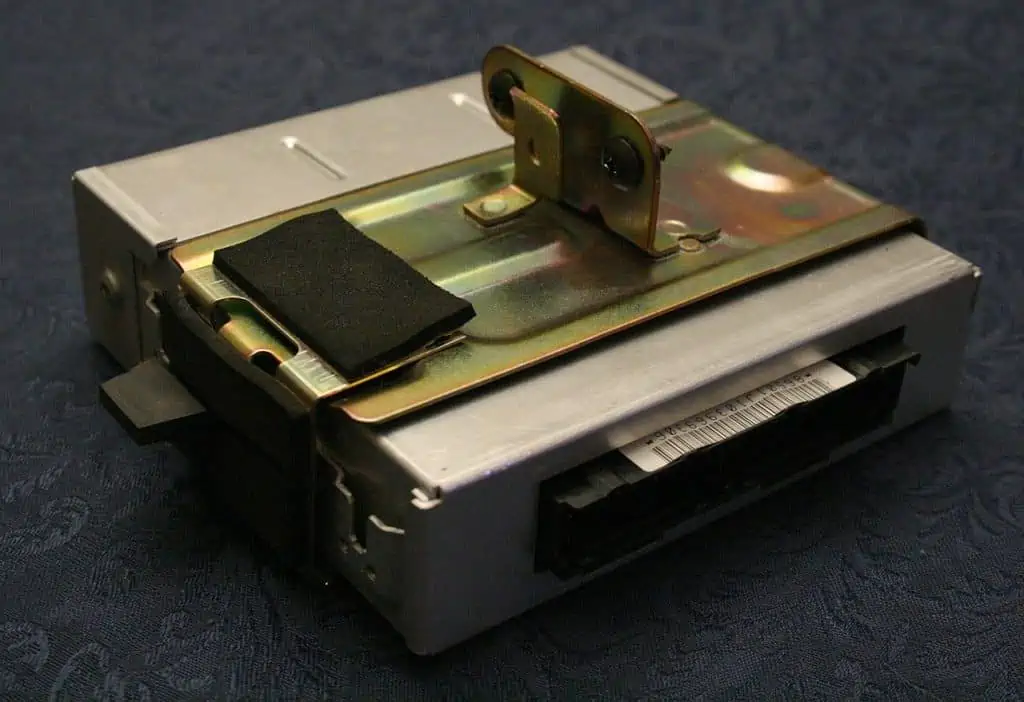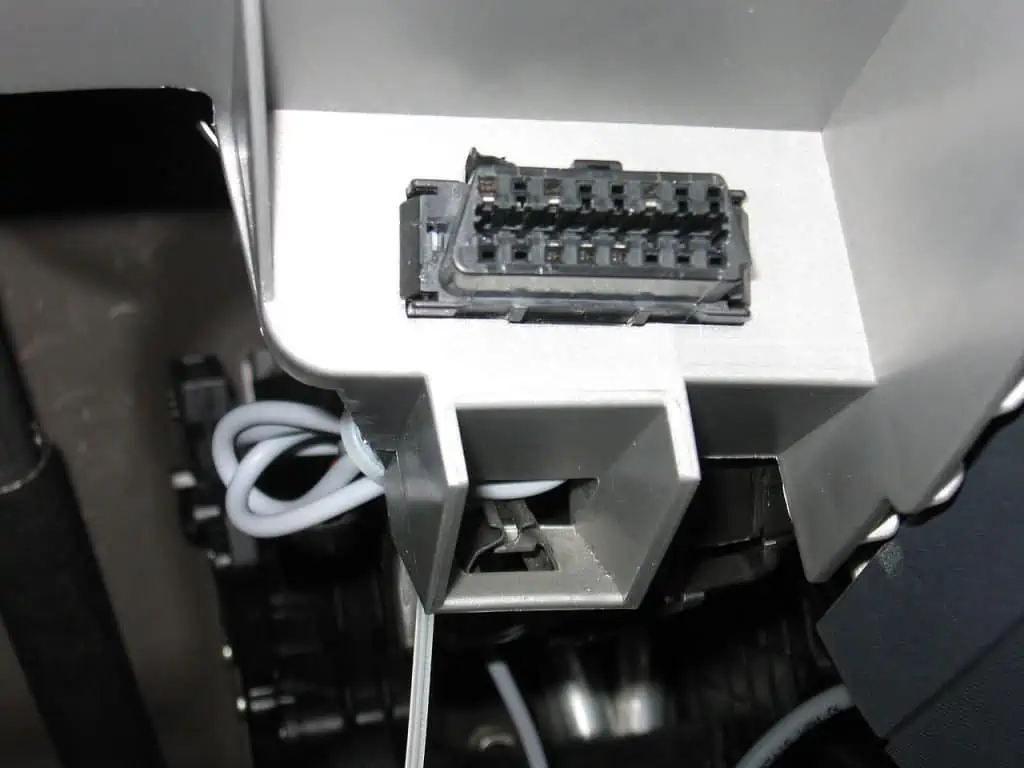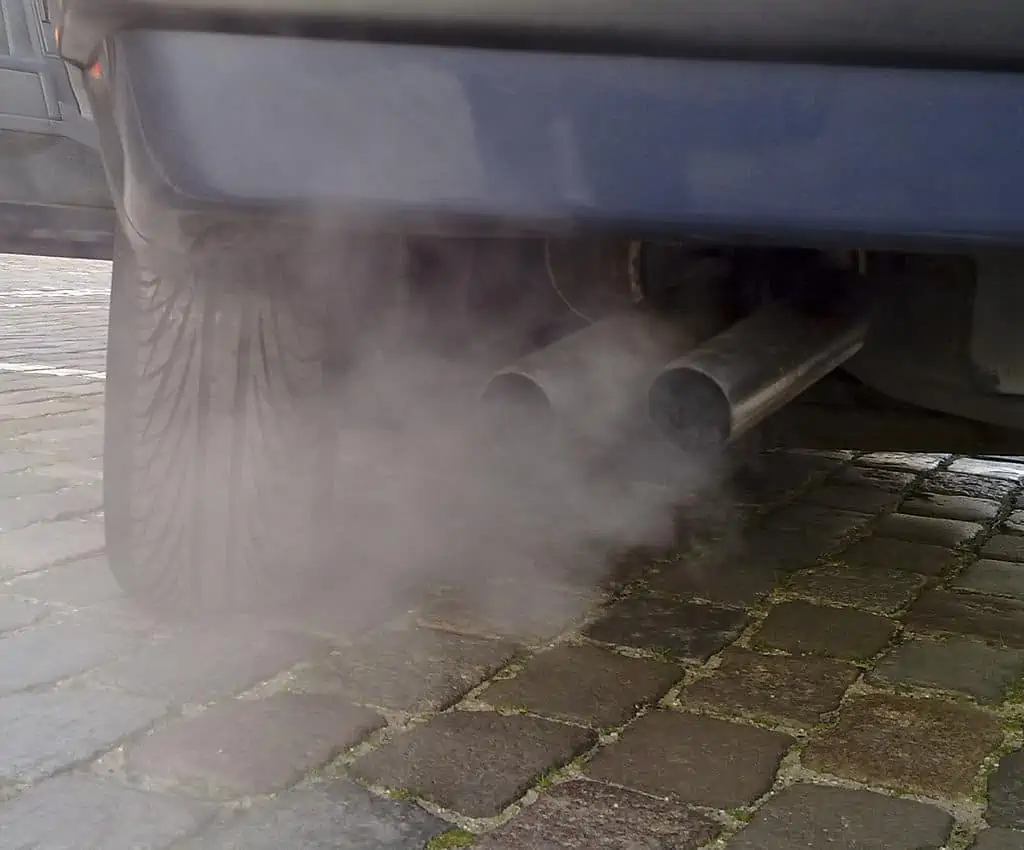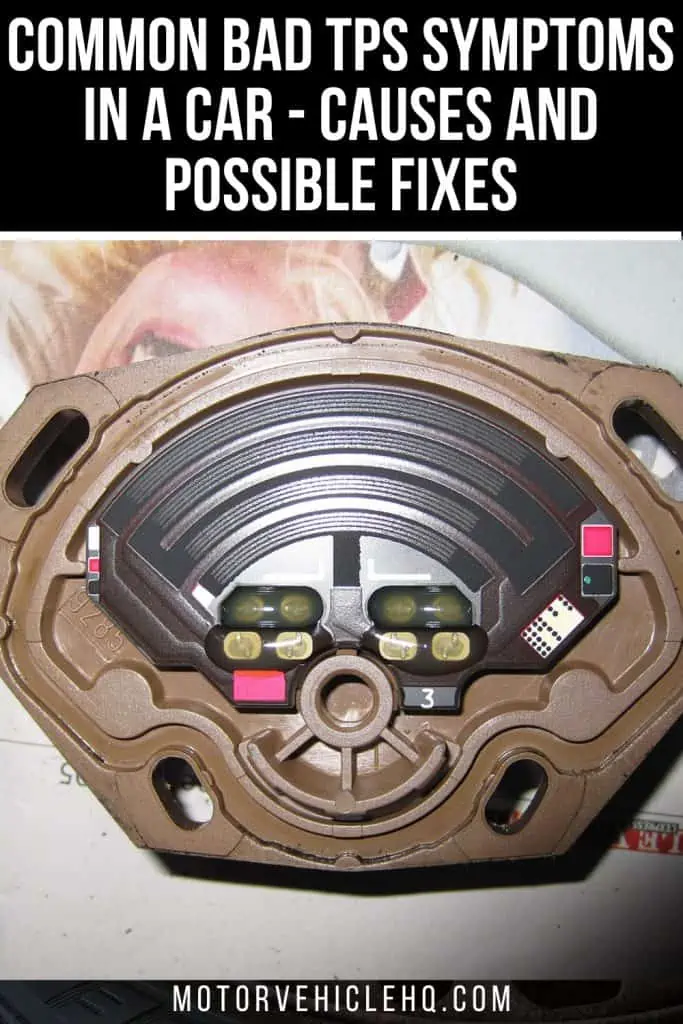The throttle position sensor (TPS) is one of the thousands of system parts that work in harmony to ensure that your car engine performs at the best it should, and it is also one of the parts that is frequently disregarded.
The throttle body, which keeps track of the air entering the engine, is a crucial part of fuel management. The quantity of gas to inject into the engine at any one time is precisely determined by the data that enables the throttle position sensor to monitor air entering the engine.
Let’s assume that the throttle position sensor and its associated partners do their jobs correctly. In such a situation, your car will operate at its best while accelerating, coasting, and cruising smoothly as you would anticipate.
On the other hand, if the throttle position sensor malfunctions, you may have performance issues, low fuel efficiency, and erratic idling, to mention a few indications of a malfunctioning throttle position sensor.
Overview of the TPS
A throttle position sensor’s job is to monitor how much air and fuel your car’s engine needs to operate at peak efficiency. It is a crucial component of the fuel management system in your vehicle and is mounted on the butterfly spindle. You’ll notice obvious throttle position sensor symptoms that affect your car’s performance when this sensor malfunctions.
This part has to be changed the moment it begins to malfunction. A malfunctioning throttle position sensor might either leave you stranded on the side of the road or cause your car to accelerate erratically, depending on what’s wrong.
When the throttle position sensor in a vehicle malfunction, the throttle body also malfunctions. A malfunctioning throttle position sensor might cause your vehicle to shake violently if it is not fixed.
As a result, the motor mount and gearbox mount experience a great deal of stress, which eventually causes them to break and necessitates the need for more expensive repairs. It’s crucial to be aware of some of the main indications of a failing throttle position sensor as a result.
One of the most important components of fuel management is the throttle body, which monitors the air entering the engine.
A TPS: What Is It?
The accelerator pedal’s location to the throttle position sensor determines how far open the throttle valve (or blade) is. The throttle position determines how much air enters the intake manifold of an engine; when it is wide open, more air enters; when it is virtually closed, less air enters.
The location of the throttle and how rapidly it opens and closes are relayed to the engine control module, and the computer utilizes this information, among other things, to determine the timing of the spark plugs and the amount of gasoline pumped into the engine. The throttle body is often where the TPS is installed (the housing that contains the throttle valve).
Because the engine control module is unable to properly regulate the fuel mixture or ignition timing when a TPS is malfunctioning, the engine may surge, hesitate, stall, or cause a “check engine” warning light to illuminate.
What Is the Function of the TPS?
The throttle position sensor, which is connected to the throttle body, measures the amount of air being sucked into the engine at any one time as well as the throttle position. The amount of air that enters the engine is managed by the throttle body. As you apply greater force to the accelerator, the throttle body flap expands wider, letting more air in.
The throttle position sensor provides information to the ECU about the position of the throttle body flap. By comparing this data to the amount of air entering the engine, the ECU may determine how much fuel is necessary and adjust the injector fuel supply appropriately.
A TPS: What Is Its Working Mechanism In a Car?
The majority of throttle position sensors have three wires. Depending on the manufacturer of your car, your TP sensor may be 4-wire or even 5-wire. All TP sensors have a potentiometer that is used to measure the throttle flap position. Potentiometers are variable resistors that have a spinning contact, sometimes known as a “wiper,” and a resistance substance.
Throttle position sensors need at least three wires for their electrical setup: one for the ground, one for the returning voltage, and one for the reference voltage.
Sensors with fewer applications, like the 4-wire and 5-wire TPS, have internal switches that report idle or wide-open throttle settings. Each time the ignition is started, the ECU sends a 5V reference signal to each of its analog sensors.
The reference voltage enters one of the TPS’s terminals, travels through the resistive component of the potentiometer, and then exits via a different terminal to return to the ECU. The third terminal completes the electrical circuit (ground).
The electronic control unit determines the current throttle position using the sensor’s returned signal, which is often reported as an aperture percentage or angle.
Location of the TPS
Since it measures the angle of the throttle body valve, the throttle position sensor is situated on the throttle body.
The throttle position sensor is most likely visible if there are cables leading to it in the same direction as the throttle body axle.
The throttle position sensor is most likely built into the electronic throttle body in later vehicles and cannot be changed independently.
What Is Likely to Take Place When the TPS Fails?
A malfunctioning throttle position sensor might have many different origins, and it can also have many different symptoms. When this occurs, the fuel efficiency suffers, but more significantly, you and other drivers are put at risk. Problems might arise while shifting gears or adjusting the base ignition timing.
Inside the throttle position sensor by The RedBurn / CC BY-SA 4.0. You may experience performance troubles, poor fuel efficiency, and unpredictable idling, to name a few symptoms, if the throttle position sensor isn’t working properly.
The TPS may go into full or partial collapse. The check engine light will often come on to let you know that the TPS has failed. Additionally, if your engine fails, the majority of vehicle manufacturers offer a “limp home” mode of operation with less power. This is made to make it possible for a driver to leave a busy road safely.
The only thing you need to do is change your TPS as soon as you find an issue.
Clearing any associated error codes and maybe reprogramming the new TPS module’s software to function with other engine control software is also necessary when replacing the TPS. The best course of action is to take your vehicle to a trained technician who can inspect it and install the necessary replacement part.
What are the Common Bad TPS Symptoms?
The location of the throttle valve on the throttle body is determined by a throttle position sensor. It recognizes the throttle valve’s movement and converts it into electrical impulses. The sensor has several issues over time.
How to determine if your throttle position sensor is broken is now the problem. To find out whether your throttle position sensor is broken, just keep reading. The following is a list of throttle position sensor symptoms:
1. Decreasing Acceleration Rate
If your car doesn’t seem to accelerate when you press the pedal, the throttle position sensor can be to blame. A broken TPS confuses your car’s control module, which leaves it unsure of how much gasoline and air to supply. If there is not enough air or gasoline, the vehicle will not accelerate quickly enough.
The issue could appear to be sporadic even though the TPS has not failed. Your fuel management system could fluctuate between using the right amount of gasoline and utilizing too much since it could occasionally produce erroneous data.
2. Jerking or Hesitation While Driving
Jerking or hesitation might be indicators of a bad throttle position sensor. You’ll experience car jerking or stuttering when driving. Inaccurate data will be sent to the ECU by a throttle position sensor is broken. The result is that the engine control unit (ECU) is unsure about how far to open the throttle valve, which makes the vehicle jerk or hesitate when it is being driven.
Contact your dependable technician right away if you see your car jerking or bucking. Given that your vehicle is attempting to accelerate on its own, this is typically an indication of a malfunctioning throttle position sensor.
Your sensor’s measurements are not stable, which results in a surging feeling. Your car starts to hop around, and it starts to jerkily accelerate or decelerate. Your car might potentially stall if this happens. This must be changed right away since it is unacceptable.
3. The Car Won’t Go Beyond a Specific Speed Limit
When the vehicle won’t move faster beyond a certain limit, this is one of the throttle position sensor symptoms. If your vehicle doesn’t go forward even after you fully push the accelerator pedal, this is a confusing sign.
If the throttle position sensor were broken, it wouldn’t be able to transmit all of the information to the ECU. As a result, the throttle valve may not be fully opened by the ECU, prohibiting the car from going beyond a certain speed limit.
4. The Vehicle Accelerates By Itself
Due to the possibility that the vehicle may accelerate on its own without the driver’s knowledge, this is a risky throttle position sensor symptom. The most frequent time it happens is when you’re driving and you don’t touch the gas pedal. It might perhaps result in a mishap.
The car will suddenly accelerate when you don’t want it to because a malfunctioning throttle position sensor won’t be able to provide its data at the right moment to speed up the vehicle.
Inside the throttle position sensor by The RedBurn / CC BY-SA 4.0. Your car will go into a safe mode that prevents rapid acceleration and speed increases and results in engine power loss if your throttle position sensor isn’t working properly.
5. Insufficient Engine Power
A decrease in engine power in your car is one of the indications of the throttle and position sensor. Because if your throttle position sensor malfunctions, your vehicle will enter a safe mode that restricts rapid acceleration and speed and causes an engine power loss.
6. The Car Is Unable to Start
A no-start condition, in which you can only crank the engine and not turn it over, can be brought on by a broken throttle position sensor.
This sort of problem can happen when the ECU cuts off the fuel injectors and saps the vehicle’s power, a situation known as no injector pulse or a malfunctioning fuel system.
Any vehicle’s engine will simply not start if you try to start it while flooring the throttle because the ECU blocks the entrance of fuel when the throttle is fully opened.
A wide-open throttle can also be caused by a throttle position sensor that is not working properly and sending a misleading signal. This would significantly reduce engine power by preventing fuel injectors from functioning.
7. The Car Experiences a Weak Idle
If a faulty throttle position sensor causes a misfire, you might be curious. Your throttle position sensor may be long gone if you detect engine misfire, stalling, or harsh idling while parked or when you stop. The RPM should be between 600 and 900 when you start your car and let it idle.
When your RPM oscillates between that range and zero, it means you have unpredictable or harsh idling issues. If this occurs together with one or more of the symptoms listed, it can be attributed to a malfunctioning throttle position sensor.
Your car’s idle will surge or the engine won’t keep a constant idle due to a malfunctioning throttle pedal position sensor. The ECU will get incorrect data from a malfunctioning throttle pedal position sensor, which can lead to changing idle speed and, in certain situations, unexpected stalling.
8. Transmission Problems
Transmission issues are one of the more hazardous throttle position sensor signs. A bad throttle position sensor can lead to incorrect shifting in an automatic gearbox by preventing enough speed changes.
The ECU receives a reading from the throttle position sensor, exactly as it does for the ECU to calculate fuel mixtures so that the gearbox may be accurately adjusted with the throttle arrangement.
The automated gearbox may struggle to shift gears or possibly create unanticipated shocks when the throttle position sensor sporadically malfunctions and delivers inaccurate information.
In addition to the transmission and engine suffering permanent harm, this can lead to extremely risky and disastrous situations.
9. Poor Fuel Economy
One of the most common throttle position sensor indications is this one. You could discover that you’re gassing up your car more regularly than you used to. This can be because your car is using more gasoline than it should since it is operating too richly.
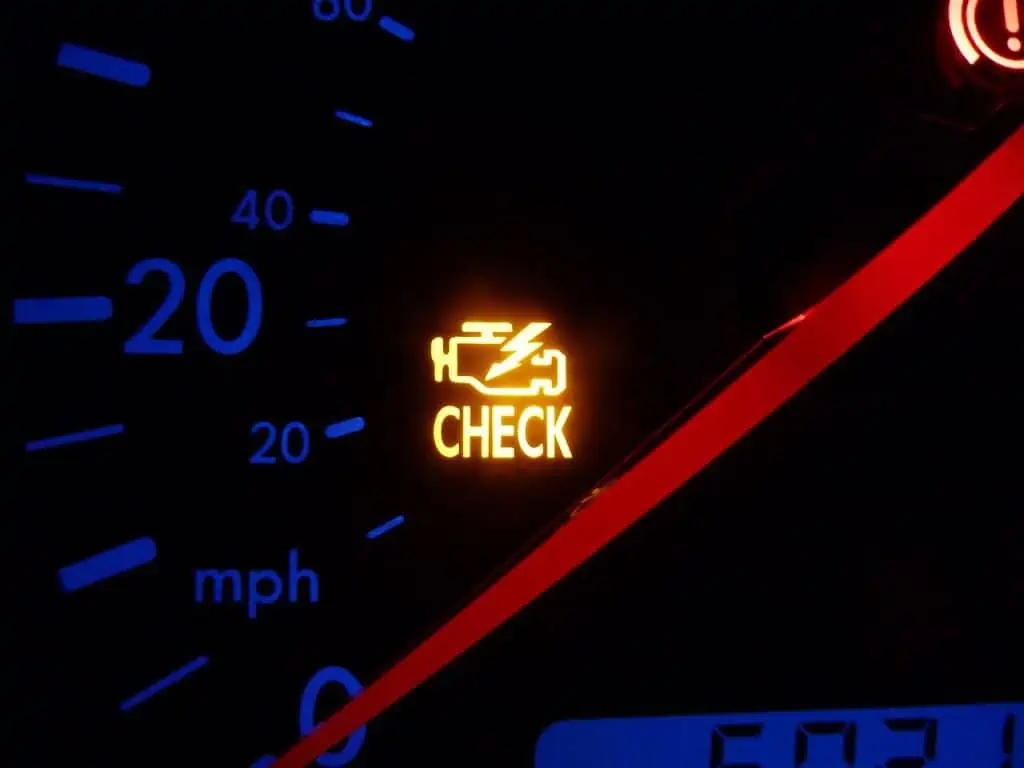
If your position sensor is broken and giving you an incorrect reading, too much gasoline is being pumped into the cylinders, wasting some fuel.
Poor fuel economy can be a sign of many problems, like dirty fuel injectors or faulty spark plugs, so it’s best to get your car checked out by a professional to identify the source of the issue.
10. A Check Engine Light Turns On
Unbelievably, the computer in your vehicle is pretty sophisticated. The computer in your vehicle continually receives a significant quantity of data from all the various components and sensors.
If any of the data it gets seems out of the ordinary, it detects a problem right away. This is accomplished by turning on your check engine light, which notifies the driver that there is a problem.
A faulty TP sensor can be the cause of your check engine light. But other problems might also be indicated by this warning light. If this light displays on your dashboard, take your car to a repair so they can look it over to determine what’s wrong.
Most vehicle repair and parts shops will read the error codes from your computer using a scan tool for little to no cost, reset the light, and tell you what the issue is.
11. The Vehicle Goes Into “Limp Mode”
Some modern cars feature a special limp mode that enables them to run at a very low speed when the engine fails. This aids in stopping further harm while the issue is being fixed. Your vehicle may enter limp mode due to the throttle valve sensor.
Another throttle position sensor symptom that you should get fixed right immediately is this one, as prolonged usage of the limp mode can be hazardous to both you and other motorists.
12. Smell of Exhaust Fumes
Failure to provide the exact amount of fuel to the engine might result in a strong gas smell coming from your exhaust pipe, which would be made more difficult by a locked transmission. A poor fuel-to-air ratio causes unburned gasoline to escape into the exhaust system. The catalytic converter may sustain damage as a result.
A Reset of the TPS
Sometimes all that is needed to resolve throttle position sensor issues and return your sensor to optimal performance is a simple reset. Removing the negative battery cable for up to five minutes or the engine control module fuse is the simplest way to reprogram or reset your throttle position sensor.
This is crucial because it reduces your chance of electrical shock and prevents your Engine Control Module from displaying an error signal.
If working with electricity makes you uneasy, avoid attempting this since it might be harmful to remove the incorrect fuse or cable from your battery. You may occasionally require specialized software to reconfigure your sensor. In this situation, a qualified technician is most suited to complete this work.
If not, occasionally your sensor has permanent damage. To get your engine back to operating at its best, it must be changed.
How are Bad TPS Symptoms Diagnosed?
If your car is giving you trouble and you notice that it accelerates slowly or if it just seems a little sluggish. While you press the accelerator pedal or when the engine is idle, it won’t move.
An electronic control unit (ECU) by Specious / CC BY-SA 3.0. The throttle position sensor provides a reading to the ECU, just as it does when the ECU calculates fuel mixes to allow for precise throttle adjustment of the gearbox.
If you observe that the engine speed or RPM fluctuates, indicating unpredictable idling, you likely have a bad throttle body. I’ll demonstrate how to identify and fix a throttle body in a car or truck.
1. Find the Throttle Body
Finding the throttle body is the first step in the diagnosing process for bad TPS symptoms. Having stated that, you must go directly to the engine by following the air filter down the air duct.
The area near the air inlet is often where you’ll find the throttle body. As you can see, not all cars are created equal. Throttle bodies are frequently built into carburetors in older cars.
2. Remove Elements Obstructing the Throttle Body’s Access
By using a screwdriver to unfasten the bolts, you may pull out the air intake duct and remove it. After that, remove any remaining obstructions to the throttle body.
3. Examine the Throttle Body Visually
Look for any dark spots on the throttle body that could have carbon or other debris by visually inspecting it. Anything like that might impede the butterfly flap inside the throttle body in some way, delaying the acceleration you experience when you depress the gas pedal.
4. Examine the Electrical Connectors
Disconnect the electrical connectors and look inside for any type of corrosion. Corrosion between the electrical connectors might result in resistance, which can lead to problems.
5. Disconnect the Throttle Body from the Car
Using the appropriate socket set as well as the ratchet handle from the mechanic toolbox, loosen the bolts securing the throttle body to the car.
6. Make the Throttle Body Clean
The throttle body may not appear to be in the worst shape from the front depending on how clogged it is, but the side may reveal otherwise. You need to remove all of the offensive stains from within.
Use only a single-purpose solvent to clean a throttle body. Make sure to specifically get a throttle body cleaning or double-check that it says carb and choke. Spray some cleanser within the throttle body, then use a soft cleaning brush to remove any residue from the dead area.
7. Reconnect the Throttle Body Back to Its Position
Put it back together by applying a little layer of sealant to the throttle body surface. Fix whatever you removed as soon as possible and tighten the nuts holding it in place.
How to Replace the TPS – The Cost to Replace It
Similar to how it needs a specific amount of petrol, an vehicle’s engine has air requirements. The combustion process will suffer if it doesn’t get the right amount of air at a certain time. This indicates a lack of engine power as well as other possible issues.
The cause of this issue cannot be disregarded. Using an automotive diagnostic tool or taking your car to a professional will help you identify the root of the problem.
If a defective TPS is found to be the problem, a premium sensor must be used in its stead. A throttle position sensor is expected to cost between $89 and $170 on average.
The parts should cost between $49 and $110, and the service price should be between $40 and $60. This price is only an estimate, so it might go up or down a little bit. By changing the parts yourself, you can avoid paying the service fee.
Female OBD-II connector on a car by M.Minderhoud / CC BY-SA 3.0. If you use an OBD II scanner to diagnose your automobile and find any of the fault codes P0120, P0121, P0122, P0123, P0124, or P2135, then the ECU has discovered an issue with TPS.
The replacement procedure is rather simple. The ECU has identified a problem with TPS if you diagnose your car with an OBD II scanner and discover any of the error codes P0120, P0121, P0122, P0123, P0124, or P2135. Keep reading, and I’ll demonstrate how to replace the throttle position sensor.
The Needed Tools
- A flat-head screwdriver
- A 100 mm socket
- A ratchet handle
- A new throttle position sensor
1. Locate the Sensor and Disconnect the Negative Battery Terminal
To avoid any short circuits or to generate a failure code for the computer in your vehicle, you must disconnect the negative battery terminal. the TPS, which is normally situated on the throttle body, may then be found.
2. Disconnect the Electrical Cables and Carefully Remove the TPS
The electrical connections on the sensor should be removed gently. It’s not too difficult to remove this electrical connection. By pushing the tab on it and wriggling it off, you may remove it with ease.
Once the electrical connector has been removed, look for any bolts or screws keeping the TPS in place. Gently loosen them so you may remove them. Never forget to compare new and used components before installation.
3. Place the Replacement TPS In Place
You must install the replacement sensor using the opposite procedure, beginning with mounting the TPS and connecting the electrical connector, after checking and verifying that both components are identical.
Always check the connections for corrosion whenever an electrical connector, such as the TPS connector, is removed. Corrosion between the connections might create resistance, which can lead to problems. You should hear a distinct clip sound as you secure the electrical connector.
4. Reconnect the Negative Battery Terminal and Double-Check Your Work
Make sure the negative connections on the battery are securely fastened by going there. Start the car, drive it on idle and under acceleration to determine if your hard work has finally paid off. Tighten any more parts you removed.
You might need to manually set the sensor depending on your car, such as the old Ford Ranger and the Chevrolet Silverado, Tahoe, and Silverado. The majority of Japanese vehicles optimize performance on their own.
Is the Repair or Replacement of a TPS Expensive?
Even while this project is not as expensive as an engine rebuild or gearbox replacement, it still won’t be cheap. The price may vary depending on your car, but you can plan on spending about $400 for components and labor for cars with easily accessible sensors and mounting screws.
However, certain cars make it challenging to get at the component. To get to the sensor, a mechanic will have to spend a lot of time removing other components, and the repair on these cars may cost $900 or more.
Is Repairing the TPS Worth It?
While some issues are worth solving, others are not. If your vehicle has a bad TPS and is still quite new with few miles, it may be worthwhile to repair it because it has a long road ahead of it.
Automobile exhaust gas by Ruben de Rijcke / CC BY-SA 3.0. Gasoline that has not been burned escapes into the exhaust system due to a poor fuel-to-air ratio. As a result, the catalytic converter can be harmed.
Now, to avoid squandering your hard-earned money, it could be wiser to sell your car as is if it has existing damages, a large mileage, and current technical issues.
Is It Safe to Drive With Bad TPS Symptoms?
The car’s throttle body won’t function if the throttle position sensor malfunctions. It could not close correctly, which could result in serious issues. The engine won’t start if it doesn’t get air. The vehicle will breathe in too much air and have a high or variable idle if the throttle becomes locked open.
The TPS: How Long Do They Last?
The TPS sensors’ batteries are designed to endure for five years. Since they are integrated within the sensor, they cannot be changed like the bulbs in a flashlight.
To ensure safe and trouble-free driving, vehicle manufacturers advise replacing TPS sensors every 5 years. Do not wait until you have indications of a malfunctioning throttle position sensor.
The Conclusion
Throttle position sensors that aren’t working properly might mess up how your car runs and even make driving risky. Remember that not all of these issues may be attributed to a bad throttle sensor. Your car’s air volume and fuel injector control mechanisms may have similar problems.
Your MAF sensor or the air filter may be the source of this issue. Due to the potential for some of these signals to be life-threatening, pay great attention to them.
As soon as you experience any of the aforementioned symptoms or indicators related to the throttle position sensor, make an appointment to have your vehicle rectified.
You may avoid costly replacement expenses, poor fuel efficiency, weak acceleration, and irregular idling by keeping an eye out for the signs of a malfunctioning throttle position sensor, regardless of whether you followed these replacement techniques or you sought expert assistance.
When you experience two or more of these symptoms at once, you should always check your throttle position sensor.
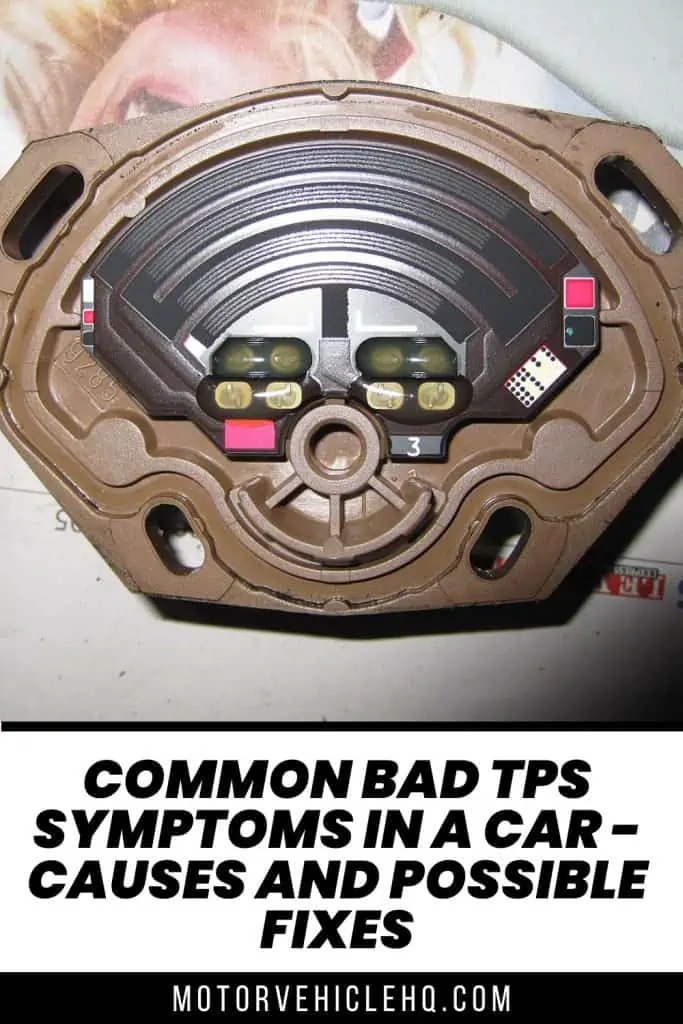
Inside the throttle position sensor by The RedBurn / CC BY-SA 4.0

Jim Wicks is the founder of MotorVehicleHQ. With over two decades of experience in the automotive industry and a degree in Automotive Technology, Jim is a certified car expert who has worked in various roles ranging from a mechanic, car dealership manager, to a racing car driver. He has owned more than 20 cars over the past 15 years. Ask him about any vehicle you see on the road and he can tell you the make, model and year. He loves the aesthetics of all things cars, and keeps his vehicles in pristine condition.
In his free time, Jim enjoys getting his hands dirty under the hood of a classic car or taking long drives along the country roads. His favorite car? A 1967 Shelby GT500, a true classic that, according to Jim, “represents the pure essence of American muscle.”
